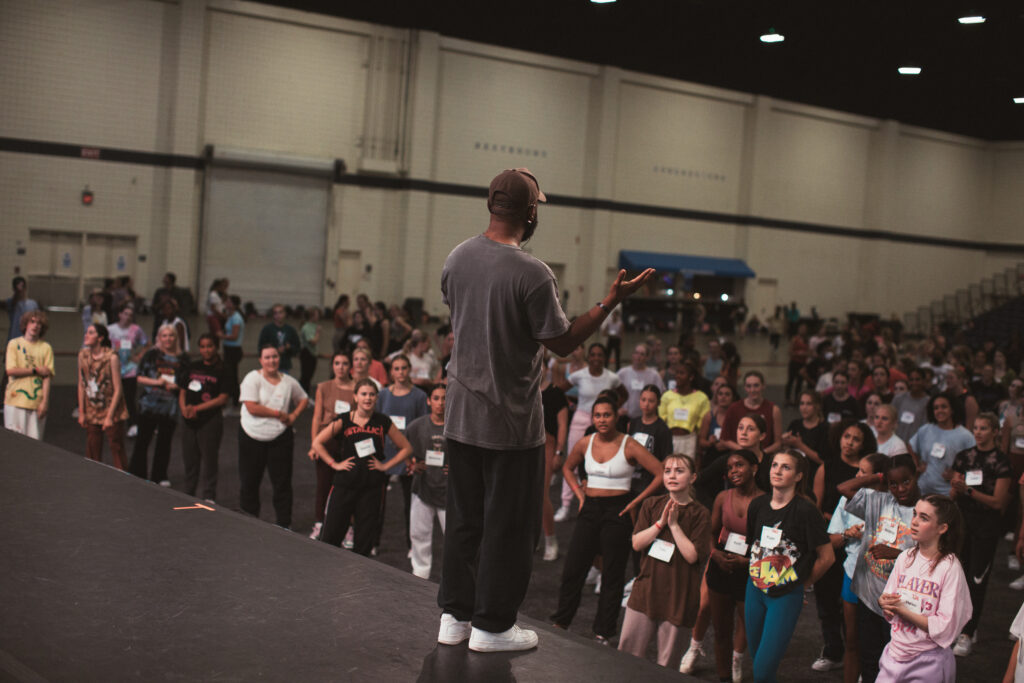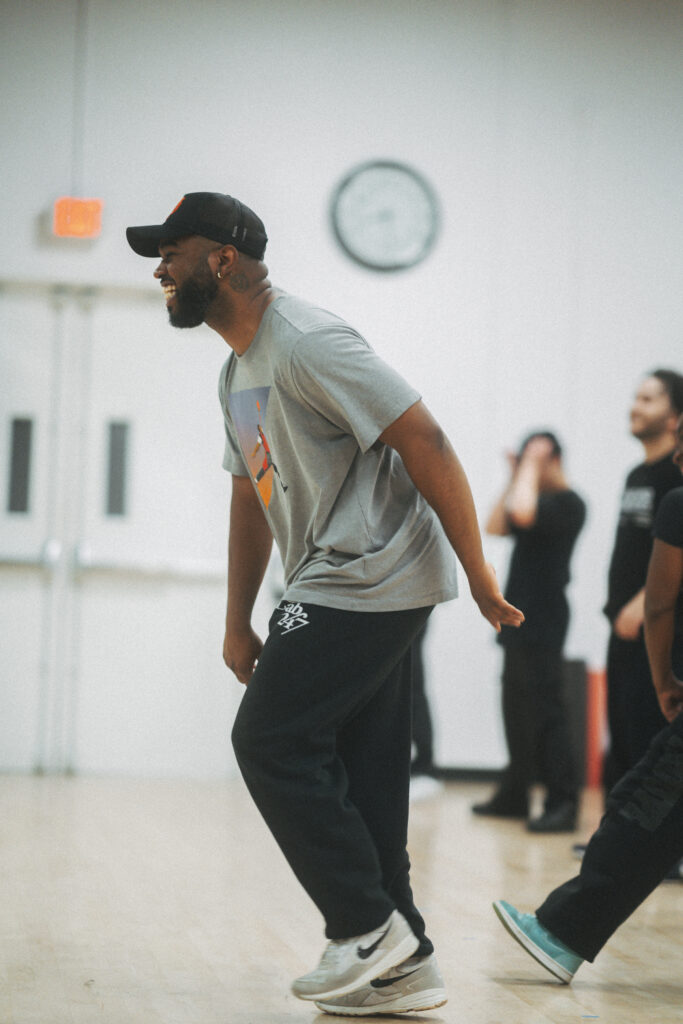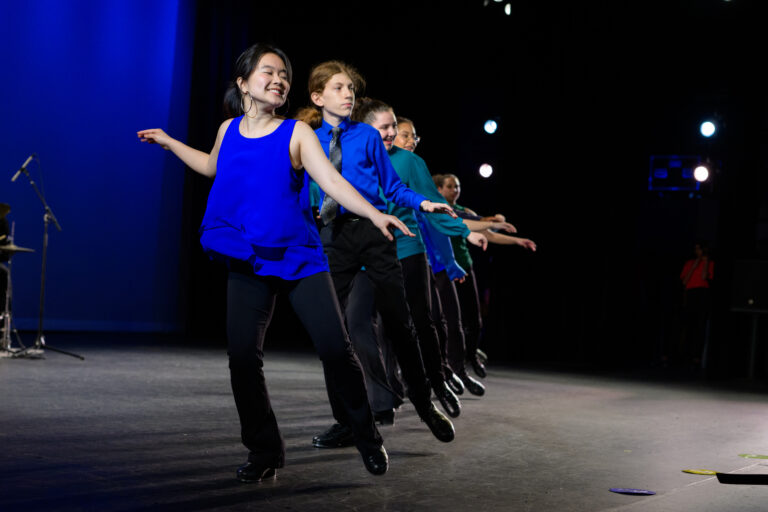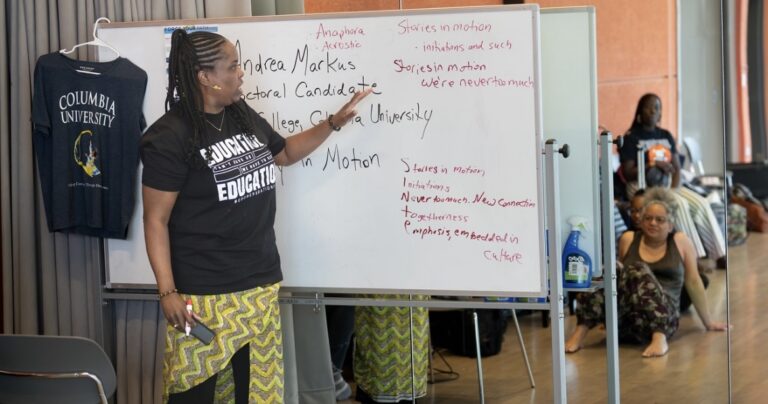
Celebrated choreographer Antoine Troupe is taking his years of creative success and giving back to the next generation of dance students. His journey wasn’t always easy, but, through challenges, he developed tools that make him uniquely fit for guiding tomorrow’s dance superstars—starting with the students at his school, Troupe Dance Company.
Troupe’s introduction to dance was informal. He explored movement through social dancing at parties, freestyling and battling friends, and training himself through DVDs and music videos while growing up in Fairfield, California. “I would try to mimic everything I saw,” he says. “I was a shy kid, and I was curious about the confidence and swagger that dancers had.” After watching a popper perform at a school pep rally to raucous applause, he was inspired. “I wanted to move like that and get that kind of reaction on the floor,” he says. But it wasn’t until high school that Troupe started to take dance seriously enough to join a crew. “Dance became the thing that made me special and gave me community and friends,” he says. He left high school early and invested all of his time and energy into his dance dreams.
At 17, Troupe created a crew called Triple Threat with a fellow Bay Area dancer, Bobby Davis. The group focused primarily on three styles: krump, popping, and a regional dance style called turfing. “I started to push the crew really hard, and we became local legends,” he says. “We had a unique style that was different from everyone else in the community.” During the early days of his crew, Troupe threw a party in which he battled a dancer named Pharside and left a lasting impression. “I did a hat trick that everyone went crazy for,” Troupe says. “It was like a movie.” One year later, Pharside remembered Troupe from that party and invited him to join him and his dancers to compete on the second season of “America’s Best Dance Crew.” The crew, called Supreme Soul, made it onto the show and ultimately finished in fifth place.
Troupe returned to the Bay Area with big plans for Triple Threat, but, unfortunately, the group fizzled out without the success he was looking for. “I hit rock bottom in 2010 and decided that I had hit a ceiling in the Bay Area and needed to move to L.A.” Troupe then spent the next year training physically, mentally, and emotionally for the move. In 2012, he booked his first professional dance job touring with a boy band called Mindless Behavior. Following the tour, he made the move to Los Angeles and it wasn’t long before choreography and teaching opportunities took the front seat of his career. “After two years of dancing, I decided to stop and focus completely on choreography,” he says. He started by teaching at smaller studios and posting class footage on YouTube. His name caught some buzz, and Troupe was offered his first class at what was then IDA Hollywood. “I had five people in that first class, but no matter how many people showed up, I always gave them an experience,” he says.

He filmed and posted his class combos, and over time he grew in popularity. “One of my daily affirmations at the time was that I would sell out a class at Millennium,” he says. “It felt insane to think about because it is such a legendary studio. One year later I sold out classes at Millennium five times in a row, back to back.” Beyond teaching, Troupe’s choreographic career began to thrive, leading him to work with major recording artists like Prince, Chris Brown, Kehlani, Drake, and Burna Boy.
Now Troupe has taken a step back from the glitz and glamour of choreography and created his own school, Troupe Dance Company. “The focus at the moment is to develop aspiring professional dancers,” he says. “Our training method centers around personal development, supportive community, artistic development, progress tracking, and industry insight.” According to Troupe, the company seeks to train dancers until they start working professionally, but they can also return at any time to brush up on their work. Each night, Troupe also offers his students yoga, technique, and choreography classes. “That’s the focus right now, but we plan to expand the Troupe brand into events, products, and training centers with the goal of not only advancing the individual dancer but the dance community as a whole,” he says.
Here he shares his goals for Troupe Dance Company, the turning point in his dance journey, the most helpful correction he’s ever received, and more.
His goals for the future “I’m passionate about helping people succeed, and showing people what’s possible after a choreography career. I’m doing that by exploring my personal journey publicly, so others can witness the moves I’m making. I want to provide high-quality education for dancers. I want to create platforms in which community can truly be built. Dance is a challenging field to navigate, and if you can go at it with other people, it becomes easier. Beyond that, I want to produce innovative, thoughtful, and creative events as well as products that amplify training and allow us to take care of our bodies and minds.”

On the turning point in his career “I knew I would need to be confident in order to build relationships in L.A., so I started studying successful people to learn what habits helped them get to where they are. It really changed my life. I thought of people who inspired me, like Will Smith, and started listening to interviews about how they were able to make it to where they are. Someone had made a compilation of Will Smith motivation, and I downloaded it and listened to it every day. I started to realize that a lot of successful people have similar habits, like they often believe in the law of attraction and think positively, and they have a strong work ethic. As I applied their lessons to my life, I became different, and I felt different about myself. It prepared me to move to L.A. and succeed.”
The most helpful correction he’s ever received “Lyle Beniga once said to dance with your bones rather than from your muscles, and, for whatever reason, that really clicked for me. It keeps you from being stiff, which makes sense with how effortlessly he moves.”
Advice for dancers with career aspirations like his “Learn from other industries outside of dance and apply those lessons to your career. If everyone stays narrow-minded, you don’t grow, the community doesn’t grow, and the art form doesn’t grow.”





